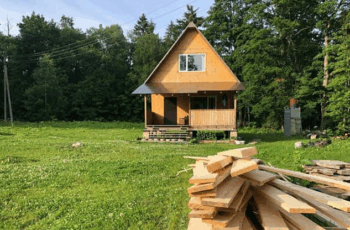
Log cabins have a timeless charm—there’s nothing quite like being surrounded by warm wood, fresh air, and nature. But while they offer plenty of beauty and comfort, they do come with their own set of challenges. Two of the biggest? Moisture and pests. If left unchecked, moisture can cause rot and mold, and pests like termites or carpenter ants can quietly eat away at the wood, leading to serious damage down the line.
The good news is, with a little routine maintenance and some smart prevention strategies, you can keep your cabin in great shape for years to come. Let’s go over some simple, practical ways to protect your space from unwanted dampness and creepy crawlers.
Moisture Control: Don’t Let Dampness Win
Moisture is one of the sneakiest threats to any log cabin. You might not even notice it at first, but over time, it can do some serious damage to the wood, the air quality, and your overall comfort. Here are a few tips to help keep things dry and healthy inside your cabin:
1. Let the air flow.
Good ventilation is your first line of defense. Make sure your windows can open easily and your vents aren’t clogged with dust or debris. Air that moves around helps prevent mold and mildew from settling in. Try opening windows daily or using exhaust fans in kitchens and bathrooms.
2. Add a layer of protection.
Use moisture-resistant coatings or membranes on your logs, especially around the base and anywhere that’s exposed to the elements. These help keep water out without sealing in moisture that needs to escape. It’s a simple step that goes a long way.
3. Watch your indoor humidity.
A cabin should feel cozy, not clammy. Ideally, your indoor humidity should sit somewhere between 30% and 50%. A dehumidifier is great if your space feels muggy, and a hygrometer will help you keep an eye on the levels. Small tweaks make a big difference when it comes to preventing mold or warping.
Pest Control: Keep Bugs Where They Belong—Outside
Bugs and rodents are more than just a nuisance—they can ruin the very structure of your cabin if you’re not careful. Here’s how to stay a step ahead of the pests:
1. Try natural repellents.
You don’t need to go straight to harsh chemicals. Essential oils like peppermint, tea tree, and cedarwood are naturally uninviting to many insects. Mix a few drops of oil with water in a spray bottle and spritz around doors, windows, and baseboards.
2. Get into the habit of inspecting.
Take a slow walk around your cabin every few months and check for tiny holes in the wood, piles of sawdust, or chewed corners. These might be signs of termites or carpenter ants. Catching them early makes all the difference.
3. Clean up the cabin’s perimeter.
Don’t give pests a reason to move in. Clear away any firewood, leaves, or standing water around the cabin. These are like VIP invitations for bugs. Also, consider planting pest-repelling herbs like mint, rosemary, or lavender near windows or walkways—they look nice and help keep insects away.
Stay Ahead With Routine Maintenance
Preventing damage is a lot easier than fixing it. The best way to protect your cabin is to stay consistent with simple checkups and record keeping. Here’s how to build that into your routine:
1. Do seasonal checkups.
Aim to inspect your cabin twice a year—once in spring and again in fall. These are the seasons when temperature and humidity shift most, and it’s when potential issues are more likely to show up.
2. Keep a log of your log cabin.
Write down what you inspect and when, including any small repairs you make or pests you notice. Over time, this gives you a helpful timeline and helps you spot patterns before they turn into problems.
3. Know when to call in the pros.
Sometimes, things are better left to the experts—especially if you suspect structural damage, widespread mold, or an active pest infestation. Professional help might cost more upfront, but it can save you from bigger headaches (and bills) later on.
Final Thought: A Little Effort Goes a Long Way
Owning a log cabin is about enjoying peace, nature, and the satisfaction of living simply. But simple doesn’t mean hands-off. With just a bit of regular attention—keeping moisture levels in check, watching out for bugs, and doing seasonal maintenance—you can keep your cabin strong, healthy, and beautiful for years to come.
After all, a log cabin is more than just a house—it’s your retreat, your escape, your little corner of the world. And taking care of it means you’ll get to enjoy it even more.


